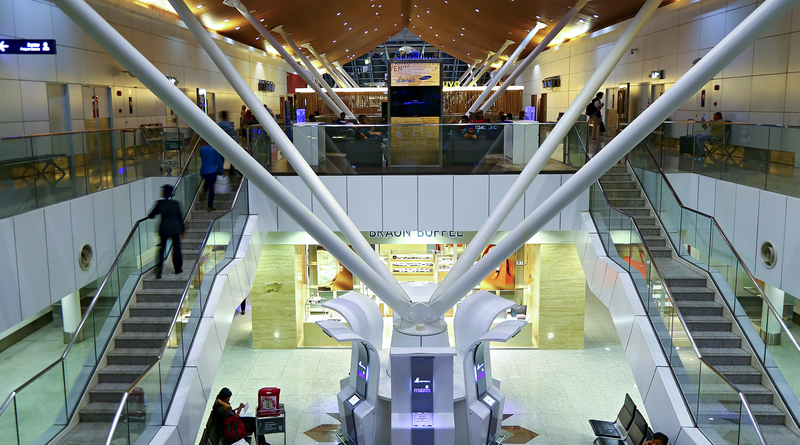Terminals +info
Kuala Lumpur International Airport (KUL) operates two main terminals: Terminal 1 (KLIA) and Terminal 2 (KLIA2).
KLIA is the primary terminal for full-service and international airlines, featuring modern architecture, extensive shopping, and a wide range of premium lounges. KLIA2, designed for low-cost carriers, offers efficient check-in, ample dining, and convenient transport links.
Both terminals provide free Wi-Fi, luggage storage, currency exchange, prayer rooms, and easy access to the city via the KLIA Express train
Reviews +info
On this website, you will find valuable tips and reviews about Kuala Lumpur International Airport, designed to help you navigate your travel experience smoothly. These reviews can help you understand what to expect in terms of service quality, cleanliness, and overall passenger experience.
-Our Review of Kuala Lumpur Airport
-Pros and Cons of KUL Airport
-Mini-Guide of the Airport (2’ Guide)
-Other reviews
-Some Stats
Transport +info
At Kuala Lumpur Airport passengers have the following transport options to the city centre:
Bus: The most economic option. Get to the city center within 1:15 h.
Train: Transfer to city center within 30 minutes by train.
Taxi: Take a taxi from the airport to Kuala Lumpur city centre and get there within an hour.
Car Rental: To rent a car at Kuala Lumpur Airport is a good idea. Check out our search engine for the best offers.
Contact Information
Address:
Kuala Lumpur International Airport
64000 Sepang
Selangor Darul Ehsan
MALAYSIA
Phone:
+60 3 8777 8888
The Airport in Numbers
-Flights: Nearly 1,000 flights daily.
-Passengers: 57.1 million in 2024.
-Terminals: 2 main terminals.
-Gates: Over 100 boarding gates.
-Runways: 2 operational runways.
-Connections: 33,000+ possible global connections.
-Service: 4.99/5 in service quality.
-Capacity: Future capacity: 97.5 million passengers.
About Kuala Lumpur
Kuala Lumpur, the vibrant capital of Malaysia, stands as one of Asia’s most modern and dynamic cities, blending towering skyscrapers with lush greenery and rich cultural heritage. The city’s skyline is dominated by the iconic Petronas Twin Towers, which remain the tallest twin towers in the world and a must-visit landmark. Visitors can ascend to the Skybridge and observation decks for breathtaking city views, especially during sunset when the towers are beautifully illuminated. Nearby, the Suria KLCC shopping mall and KLCC Park offer shopping, dining, and nightly fountain shows, making the area a hub for both locals and tourists.
Beyond the city center, Kuala Lumpur boasts a variety of attractions. The KL Forest Eco Park provides a unique rainforest experience right in the heart of the city, featuring a canopy walkway that offers panoramic views of the surrounding skyline. The Kuala Lumpur Tower (Menara KL) is another highlight, offering 360-degree views from its observation deck and a revolving restaurant. For history and culture, Merdeka Square and the Sultan Abdul Samad Building showcase colonial architecture, while the National Mosque of Malaysia and Masjid Jamek reflect the city’s Islamic heritage.
Food lovers will find paradise in Jalan Alor and Chinatown, where bustling night markets serve up an array of Malaysian street food, from satay and noodles to exotic tropical fruits. The Central Market, with its vibrant mix of food stalls, cafés, and shops selling traditional crafts and souvenirs, is a cultural hotspot. Just outside the city, the Batu Caves—a series of dramatic limestone caves and Hindu temples—draw thousands of visitors annually, especially during the Thaipusam festival.
Kuala Lumpur is also a shopper’s haven, with world-class malls like Pavilion Kuala Lumpur, Berjaya Times Square, and Mid Valley Megamall offering everything from luxury brands to local goods. For families, attractions such as Aquaria KLCC, Kuala Lumpur Bird Park, and Sunway Lagoon Theme Park provide fun and educational experiences. With its blend of modernity, culture, and nature, Kuala Lumpur offers something for every traveler.



